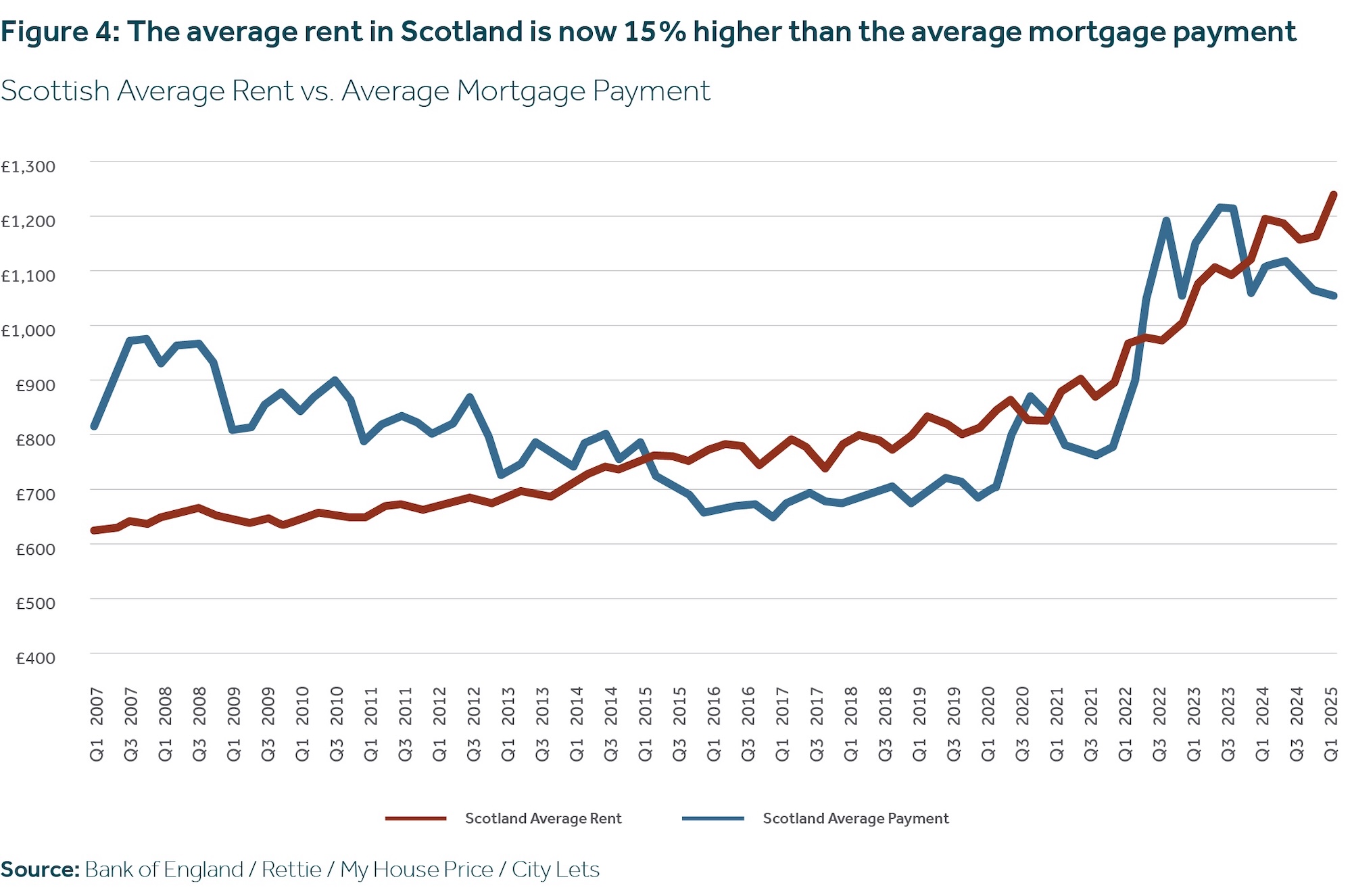Rettie: Average rent in Scotland now 15% higher than average mortgage payment

North Kelvinside
Average monthly mortgage payments in Scotland have fallen by over £140 since the end of last year, signalling improving affordability in the housing market.
According to Rettie, the average payment stood at £1,057 at the end of the second quarter of 2025, down from over £1,200 in late 2023. The property firm has also revealed that the average rent in Scotland is now 15% higher than the average mortgage payment.
The drop in average payments coincides with mortgage activity returning to pre-pandemic levels after a difficult few years. This recovery has been bolstered by a surge in first-time buyers, with 6,990 new mortgages issued to this group in the first quarter of 2025 – a 15.7% year-on-year rise.
Overall in 2024, the number of new mortgages for first time buyers and home movers increased by 22% year-on-year.

With a hike in mortgage lending linked to schemes offering more flexibility from providers like Halifax Intermediaries and Nationwide Building Society, property firm Rettie says new affordability rules introduced in July will help to fuel further increases in mortgage lending during 2025.
Bob Duncan, managing director of Rettie financial services, said: “After a challenging couple of years in the mortgage space, activity is picking up, buyers are returning, and lenders are becoming more competitive.
“It’s not a boom but, for the first time in a while, there’s a sense of stability. Sub 4% deals are reappearing particularly for this with strong deposits or good credit. While affordability remains tight, it feels like we’ve moved past the interest rate peak.”

A property in Pittenweem
However, for homeowners approaching the end of their current fixed-rate deals in 2025, the transition to higher rates will be significant with tens of thousands of Scottish homeowners moving from rates as low as 2% to 4.5% or above.
Dr John Boyle, director of research and strategy at Rettie, said: “There are likely to be a few bumps in the road ahead as swap rates continue to influence the cost of mortgage lending. The longer term picture points towards gradual and modest improvements in lending conditions, which should boost market activity but not substantially.”
“Affordability remains stretched relative to long-term norms, with payments still consuming 30 to 40% of average household income in Scotland’s largest cities,” added Dr Boyle.














